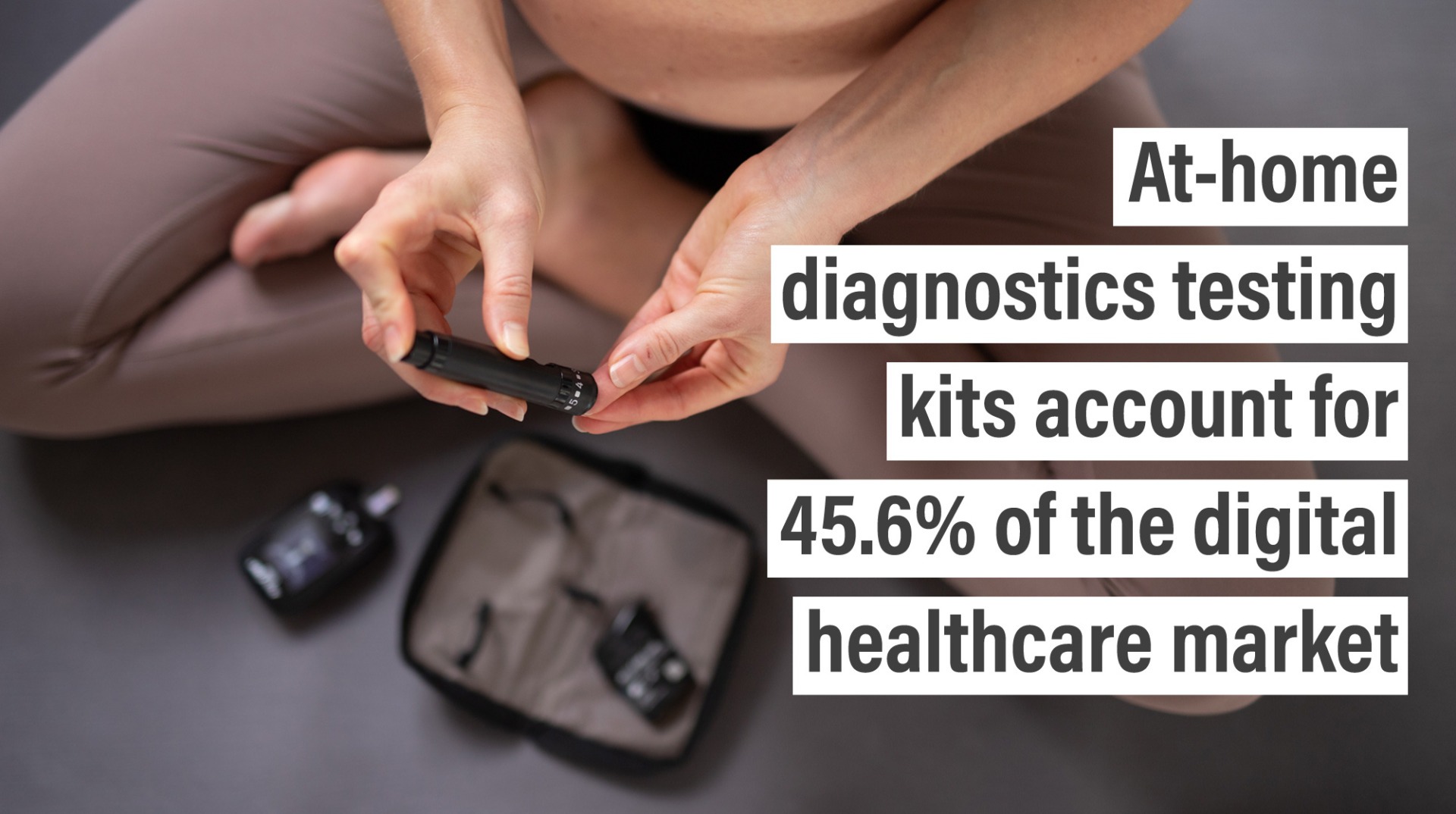How medical IoT offers enhanced versions of conventional devices
Reading time 11 mins
Key Points
- COVID-19 accelerated innovation and development in the medical industry. Digital healthcare has become a necessity for many patients and practitioners
- Current trends include electrocardiography (ECG) devices and at-home testing kits
- However, it’s debatable whether these devices can be considered ‘enhanced’ versions as they don’t provide results that are superior to conventional devices
- On the other hand, technologies such as Digital Twins, 3D printed medication, and Mixed Reality in Medicine could supersede traditional practices
- What distinguishes medical IoT from conventional devices is how useful end-users consider them to be
Is your business ready to harness the potential of IoT? Our expert team can help design and implement bespoke IoT solutions. Reach out to us now to kick-start your IoT journey.
Ben Mazur
Managing Director
I hope you enjoy reading this post.
If you would like us to develop your next product for you, click here
While COVID-19 set many industries back, it accelerated innovation and development in the medical industry – particularly where digital health and medical IoT are concerned. Although digital health opportunities and technologies had been available before, uptake at all levels (individual, organisational, systemic) was slow as many feared these technologies could become disruptive. However, digital health went from being an option to a necessity during the pandemic and removed much of the resistance to uptake which had been present before [1].
Post-pandemic, the Point of Care (POC) has also shifted. Consultations, diagnostics and testing that used to be done in hospitals and medical clinics can now take place wherever the patient is. Medical IoT made this possible, and many argue that it offers enhanced capabilities over conventional medical devices.
Is this, in fact, the case?
Can digital healthcare solutions such as electrocardiography smartwatches, remote care devices, and at-home testing offer unique benefits that traditional methods cannot?
The Internet of Medical Things (IoMT) and digital healthcare
Digital healthcare refers to using digital technologies for healthcare purposes [2]. This relatively new field comprises a wide range of subcategories, including information technology, health informatics, wearable medical devices, software as medical device (SaMD), and telemedicine. When these devices and applications are connected to a healthcare IT system via an online network, we have what is referred to as medical IoT – or IoMT.
The benefits of all technologies are the same: they make life easier and bring a level of comfort and reassurance that we didn’t have before. In one of our previous articles on the potential of these technologies, we looked at how IoT in healthcare empowers patients to manage their health and simultaneously reduces the burden on the healthcare system.
Smart devices such as watches that monitor heart rate or wearable insulin patches for people with diabetes are game-changers for users and their healthcare providers. But does that mean that they’re set to replace conventional electrocardiograms or insulin pens? Can medical IoT devices offer outcomes that traditional devices cannot?
Medical IoT devices that don’t offer anything ‘new’
On the one hand, one can argue that many of these medical IoT devices aren’t ‘new’ technologies or discoveries. Take, for example, at-home testing kits, which currently account for 45.6% of the world market and are forecast to expand at a compound annual growth rate (CAGR) of 5.6% to reach USD 11.55 billion by 2030. These tests are confidential, quick, accurate, and cost-effective – enabling patients to check for diseases and health conditions without requiring a doctor’s or hospital visit. Common types of at-home diagnostics testing kits include [3]:
- General wellness: Testing for allergies, food sensibilities, and diabetes
- DNA and genetics: Paternity, genealogy, and ancestry tests that provide insights into inherited diseases and health-related risks that people can use as part of a preventative healthcare plan
- Sexual health: Sexually transmitted diseases such as herpes, HIV, and syphilis
- Women’s health: Fertility and progesterone testing, as well as polycystic ovary syndrome
- Men’s health: Prostate-specific antigens, and cortisol testing to detect Cushing syndrome or Addison’s disease

Undeniable benefits aside, one cannot say that these devices are ‘enhanced’ versions of their conventional counterparts: the results they deliver aren’t anything new. One cannot argue otherwise, even when looking at medical IoT devices with more robust capabilities. For example, the wearable Electrocardiography (ECG) segment of the digital healthcare market is rapidly expanding at a CAGR of 5.6% and is expected to reach an estimated value of USD 10.79 billion by 2030. Benefits include [4]:
- Versatility: wearables come in the form of smartwatches and fitness trackers, ECG patches, chest straps, clothing and shoe-embedded sensors
- Users can check their heart rate on the go and detect abnormalities such as irregular rhythms (arrhythmia) early to prevent strokes
- Lightweight and portable, so patients don’t need to schedule appointments with their doctors to analyse their heart activity
- Allow users to monitor activity over long periods and detect abnormalities/trends that aren’t always present during a once-off doctor’s visit
However, the downside is that these wearables, while increasing users’ awareness regarding heart activity, have severe limitations. Inaccuracies in precision reporting (e.g. sweat/moisture on the skin), less accuracy than hospital-grade ECGs, and limited data (i.e. cannot detect other cardiovascular conditions such as blood clots, high blood pressure, and high cholesterol), to name a few [5].
IoMT devices that are overtaking traditional methods
Simply because some medical IoT devices can’t be considered ‘enhanced’ versions of their conventional counterparts, one cannot assume that all of them are in the same boat. Indeed, the field of digital health is expanding and innovating at such a fast pace that devices that only existed in the realm of science fiction a few decades ago are becoming a present-day reality.
Digital Twins: Imagine having a computer-generated image of yourself, like an avatar, that’s an exact replica – right down to the cellular level. The impact of experimental treatments and surgeries could then be tested on the digital twin first without risking your life. Personalised treatments could be developed more rapidly, and physicians would be able to make more precise clinical decisions.
3D Printed Medication: In 2020, a specialist biotech company based in the UK, FabRx, launched the first commercially available 3D printer, M3DIMAKER™, for personalised drug manufacturing. The system is controlled by specialised software, allowing for the selection of the required dose according to the prescription given by the clinician. This medical IoT device is revolutionising medicine and improving sustainability [6]:
- Ability to produce small batches with tailored dosages, shapes, sizes, and release characteristics e.g. octopus shaped pills for children
- Allows different flavours to be incorporated without needing a film coating
- Reduces cost, waste, and environmental burden
- Improves accessibility to medication in remote locations
Mixed Reality (MR) in medicine [7]: The use of immersive, computer-generated technology (e.g. virtual and augmented reality) allows holographic images and data to be overlaid onto real-life, real-time situations and is opening new doors in healthcare. Transformative medical IoT devices using MR that are currently in use include:
- Microsoft’s HoloLens: Mixed reality smart glasses that use sensors, advanced optics, and holographic processing to blend 3D imagery with physical environments. Recently featured in a 24hr event where 12 holographic surgeries were performed – including a shoulder replacement in South Africa and a knee procedure in the UAE.
- Enables surgeons to collaborate across borders, access data, and improve accuracy in real-time
- Remote visitation: Connects all of a patient’s healthcare providers (e.g. surgeon, nurse, physiotherapist) to the information that they need and brings the POC to the patient’s bedside, which also reduces procedure times and complication rates
- Virtual operating theatres: Enabled by software platforms such as Proximie, surgeons are using MR to extend the geographical real of surgeons to create a borderless operating room
Medical IoT, in these examples, shows that these devices are not merely enhancing conventional methodologies – but possibly superseding them.
A final word on digital healthcare devices
When employing new technologies in any field, comparisons with those already in use or those that failed to take hold are inevitable. What are the benefits of fitness trackers when an app on a smartphone can do the same thing? How is Mircosoft’s HoloLens doing so well when Google Glass was a complete flop? Why are markets for home testing kits and smartwatches growing when hospitals and clinics provide the same – if not more accurate – results?
In a word: Usefulness.
Whether or not a medical IoT device is better than its conventional counterpart isn’t as important as how useful it is. Granted, what users consider ‘useful’ is relative – depending on what they prioritise (e.g. time-saving, affordability, user-friendly, lightweight). This is why product developers and designers put so much into Research and Development – and why R&D is at the core of everything we do at Ignitec. What’s the point in designing a product with enhanced capabilities that nobody finds particularly useful?
There’s so much more on this subject that we would love to explore (e.g. vocal biomarkers, skin cancer detection technologies, medical drones), but we’ll save that for another post. Let us know if there’s a topic in health and IoT you would like us to explore or a technology you’re excited about that we forgot to mention – we’ll add it to our list!
- Digital health before, during and after COVID-19 in Europe. (2021b, September 15). https://eurohealthobservatory.who.int/news-room/news/item/15-09-2021-digital-health-before-during-and-after-covid-19-in-europe
- Digital Health Explained: Why It Matters and What to Know. (2022, September 5). Coursera. https://www.coursera.org/articles/digital-health?isNewUser=true
- The future of diagnostic testing is in the home. (n.d.). cardinalhealth.com. Retrieved 15 November 2022, from https://www.cardinalhealth.com/en/essential-insights/the-future-of-diagnostic-testing-is-in-the-home.html
- Lim, S. (2022, August 31). A Guide to Wearable Electrocardiogram (ECG) Devices: Types, Advantages and Disadvantages. APACMed. https://apacmed.org/wearable-ecg-device/?utm_source=rss
- Wearable Electrocardiography (ECG) Devices Market Industry Analysis, size, share, and Trends, 2022 to 2030. (2022, October 20). MarketWatch. https://www.marketwatch.com/press-release/wearable-electrocardiography-ecg-devices-market-industry-analysis-size-share-and-trends-2022-to-2030-2022-10-20?mod=search_headline
- GlobalData Healthcare. (2021, February 4). 3D printing of drugs can revolutionise personalised medicine and improve sustainability. Medical Device Network. https://www.medicaldevice-network.com/comment/3d-printing-drugs-personalised-medicine-sustainability/
- Saltmarsh, A. (2022, August 4). Mixed Reality: A New Vision for Healthcare. MedicalExpo e-Magazine. https://emag.medicalexpo.com/mixed-reality-a-new-vision-for-healthcare/
We love to talk about new ideas
Do you have an idea? Book a consultation with an expert - it's free, it's confidential and there are no obligations.
+44(0)117 329 3420
[email protected]
Ignitec Technology Centre
1 The Powerhouse
Great Park Road
Bradley Stoke
Bristol
BS32 4RU


